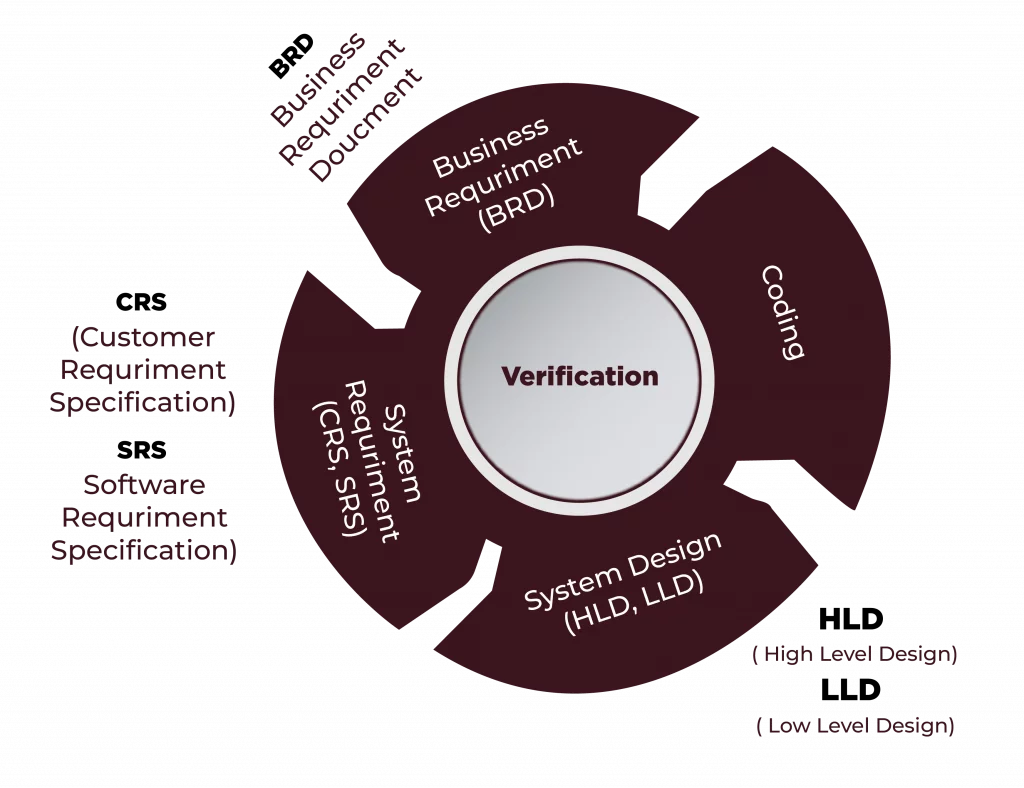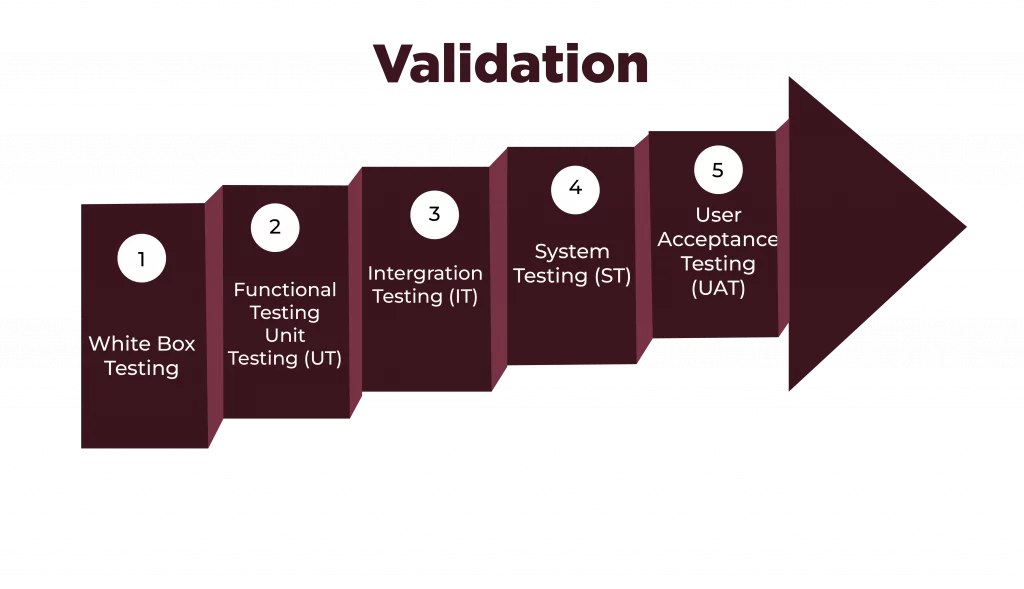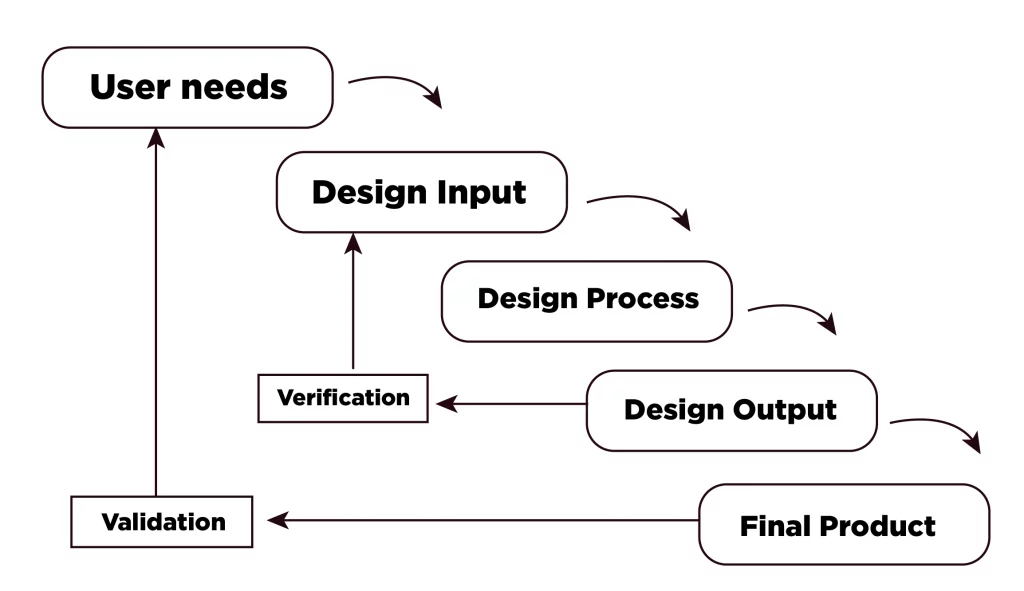Verification and Validation are the actions of testing whether a software system conforms to specified specifications and obtaining what it is supposed to do. The development of good software is highly dependent on the roles of verification and validation. Verification helps us examine if the product is built correctly against the requirements, and validation helps us observe if the right product is built to fulfil end-user needs. In this article, we will see the difference between Verification and Validation.
What is Verification Testing?
At different stages of the creation of a system, verification testing is performed to ensure that the system satisfies its requirements. It is a test performed to verify that a system will satisfy all of the specified requirements at a specified point in that system’s development. Simply put, verification testing is the process of checking if a system or component meets specific requirements and specifications and is built to the appropriate standards. So it is just reading through various documents like requirements specification, design blueprint, ER diagram, database table design, test cases, test scenarios, traceability matrix, etc, that all is according to project standard and protocol.
With this process, we can take this reconfirmation that the system was designed correctly and is working as expected, which means that every element of the system, be it software, hardware, documentation or team practices, is error-free and meets the standards required. Verification testing corresponds to code reviews, walkthroughs, inspections, design, and specification analysis.
Verification tests verify that all development elements (software, hardware, documentation, and human resources) comply with an organisational and team-specific standard and protocol. They authenticate that the system design and architecture were correctly architected and free of errors. Often, verification checks are like studying the spec and comparing it against the logic in the code.

Also read: Different Types of Software Testing
Advantages of Verification Testing
- Early and frequent verification decreases the number of bugs and defects that get produced at a later stage.
- Through verification at each stage, the devs, product managers and stakeholders can get more insight as to what the product would be best developed as in the next stages.
- Even if they won’t fix all bugs immediately, verification gives QAs some estimate of how many of them are emerging and improves their ability to plan to deal with those when they do.
- Verification helps software stay tightly locked in alignment with the customers and the business requirements at all times. It makes sure devs don’t need to do more than necessary work as development progresses.

POSTGRADUATE PROGRAM IN
Multi Cloud Architecture & DevOps
Master cloud architecture, DevOps practices, and automation to build scalable, resilient systems.
What is Validation Testing?
Validation testing is a process that produces a final product to be sure it is what stakeholders want and expect. It is an activity to validate that an end product stakeholder’s expectations and true needs are being met. Validation testing, in other words, is a testing that is conducted to check whether the final product ought to match the stakeholders’ and customers’ expectations and needs. This is a post-verification process and involves verifying that the product, as developed, does what it is intended to do in real-world conditions. Validation testing, unlike verification testing, happens at the end or even after the whole system is built; that is, it may occur at the close of a development phase.
Ultimately, its end objective is to check whether the final deliverable met what stakeholders and customers had asked for. In contrast to verification testing, which takes place at each stage of development, validation testing takes place at the end of a module or after the software’s total construction. One of its main goals is to ensure that the final product will meet the requirements of the stakeholders and the customer.
This category covers most of the forms of QA. This includes unit tests and User Acceptance Tests for various types of quality assurance tests that ensure that the system works as it is supposed to and outputs measurable results. Some of the standard tests under this heading:
- Unit Testing
- Integration Testing
- Smoke Testing
- Functional Testing
- Performance Testing
- Regression Testing
- Security Testing
- System Testing
- Accessibility Testing
- Cross Browser Testing
- User Acceptance Testing

Advantages of Validation Testing
- Once it runs validation tests, any bugs missed during verification will be uncovered.
- Validation tests would point to inappropriateness specifications if specifications needed to be revised or revised. It’ll take teams some time and effort to fix, but it will stop a bad product from making it out to market.
- Validation tests ensure that the product meets and satisfies customer demands, preferences, and expectations in several conditions (e.g., slow network connectivity, low battery).
- Additionally, these tests are required to check that the software works perfectly on any browser-OS device combination. Simply put, they authenticate software for cross-browser compatibility.
Also read: Difference between Smoke and Sanity testing
Difference between Verification and Validation
| Verification | Validation | |
| Definition | Static process of checking documents, design, code, and program to see if the software is built according to requirements. | The dynamic process of testing and validating the actual product to meet the exact needs of the customer. |
| Type of Testing | Static (does not involve code execution). | Dynamic (involves code execution). |
| Methods | Reviews, walkthroughs, inspections, desk-checking. | Black Box Testing, White Box Testing, Non-functional testing. |
| Focus | Conformity to specifications. | Meeting customer requirements and expectations. |
| Bug Detection | Finds bugs early in development. | Finds bugs not caught by verification. |
| Target | Application and software architecture, specification, design, database. | Actual software product. |
| Execution Team | Quality assurance team. | Testing team with QA involvement. |
| Sequence in Development | Performed before validation. | Follows verification. |
| Nature of Checks | Checking of documents/files by humans. | Execution of program by computer. |
| Purpose | Ensures correct implementation of functions. | Ensures software is traceable to customer requirements. |
| Key Concern | Aligning with customer and business requirements at each stage. | Functioning across different conditions and environments. |
| Defect Detection Rate | Finds about 50-60% of defects. | Finds about 20-30% of defects. |
| Dependence | Based on the reviewer’s opinion, it may vary. | Based on factual testing, often stable. |
| Emphasis | Process, standards, guidelines. | Product itself. |
| Execution Requirements | Does not require devices, platforms, browsers, OS. | Best executed using real browsers, devices, OS. |
| Example | Ensuring that a software module conforms to the design document. | Ensuring that a software application meets the requirements and expectations of the users. |

82.9%
of professionals don't believe their degree can help them get ahead at work.
Benefits by Differentiating Verification and Validation
Benefits that we see when comparing verification and validation in software testing are:
- Clear Communication: It tells team members whether you are checking requirements (verification) or functionality (validation).
- Efficiency: Clearing up what verification is, checking documents and designs without executing the code, and validating the actual software to assure your software is working and usable, will cut down on redundant work and improve your teams’ testing processes.
- Minimised Errors: And having this trail reduces the chances of missing out on any important requirements or even functionalities in testing and the overall software functionality is tested much better.
- Cost Savings: Matching the most effective timing of the test resources by identifying resources that need to be allocated for verifying vs. validating activities enables economic control.
- Client Satisfaction: Both verification and validation processes are conducted rigorously so that software would meet or surpass client and user expectations, hence, upwards of the quality and user satisfaction of the software.
- Process Improvement: Organisations can differentiate between Verification and Validation, refine the testing methodologies, find resources to improve and also increase the software development lifecycle.
Also read: Difference Between Functional and Non-functional Testing
Conclusion
Verification is a static process that does not involve running code; instead, it focuses on examining and evaluating design and documentation. It ensures that the software is being built correctly according to specifications. On the other hand, validation is a dynamic process that includes running the software to examine its appropriateness, usability, and functionality in order to make sure the correct product is created to satisfy user needs. In order to produce software that is of the highest calibre, both procedures are necessary.
When Should I use Validate and Verify?
Validation or Validation UAT(User Acceptance Testing)?
What do you mean by Verification in software testing?
What does verification and validation mean? Explain with examples.
Updated on October 8, 2024

